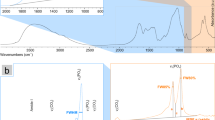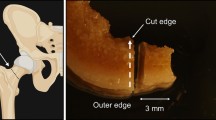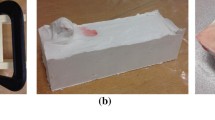Abstract
Introduction
Ashing is widely used to determine weight fraction of water-free bone that is mineral, but no standard procedure exists and the range of techniques used spans a range of temperatures and times over which the amount of weight loss is variable. We show that variability is largely due to progressive loss of CO2 from CO3 2− ions in the apatite crystal lattice, beginning at 600 ℃, typically used for ashing. We test the effect of varying temperature, time, and weight of sample and develop a reliable method, using small samples.
Materials and methods
Replicate samples of bovine cortical bone were tested at 500 ℃, 600 ℃, and 700 ℃ for times ranging up to 24 h. We also tested samples of multiple humans at what we concluded to be the optimal conditions.
Results
Varying conditions of ashing resulted in variations in apparent ash weight % by up to 7%. Samples between 5 and 20 mg heated to 600 ℃ for 1 h gave results agreeing with generally accepted values, but with much smaller variability. Ash wt% values for multiple human bone samples differed by up to 4.8%, but replicate data for individuals agree to ± 1 wt%.
Discussion
In conclusion, a satisfactory method is given for ash weight determination using small samples, and yielding highly reproducible data. If accepted widely, ash weight values between laboratories could be used to study variations due to diet, age, drug treatment, and disease.







Similar content being viewed by others
Availability of data and materials
Not applicable.
References
Quelch KJ, Melick RA, Bingham PJ, Mercuri SM (1983) Chemical composition of human bone. Arch Oral Biol 28:665–674
Roschger A, Gamsjaeger S, Hofstetter B, Masic A, Blouin S, Messmer P, Berzlanovich A, Paschalis EP, Roschger P, Klaushofer K, Fratzl P (2014) Relationship between the ν2PO4/amide III ratio assessed by Raman spectroscopy and the calcium content measured by quantitative backscattered electron microscopy in healthy human osteonal bone. J Biomed Opt 19:065002
Taylor EA, Mileti CJ, Ganesan S, Kim JH, Donnelly E (2021) Measures of bone mineral carbonate content and mineral maturity/crystallinity for FT-IR and Raman spectroscopic imaging differentially relate to physical-chemical properties of carbonate-substituted hydroxyapatite. Calcif Tissue Int 109:77–91
Roschger P, Fratzl P, Eschberger J, Klaushofer K (1998) Validation of quantitative backscattered electron imaging for the measurement of mineral density distribution in human bone biopsies. Bone. https://doi.org/10.1016/S8756-3282(98)00112-4
Weiner S, Price PA (1986) Disaggregation of bone into crystals. Calcif Tissue Int 39:365–375
Elliott JC (2002) Calcium phosphate biominerals. Rev Mineral Geochem 48:427–453
Bee SL, Mariatti M, Ahmad N, Yahaya BH, Abdul Hamid ZA (2019) Effect of the calcination temperature on the properties of natural hydroxyapatite derived from chicken bone wastes. Mater Today Proc 16:1876–1885
Schwarcz HP, Binkley DM, Luo L, Grandfield K (2020) A search for apatite crystals in the gap zone of collagen fibrils in bone using dark-field illumination. Bone. https://doi.org/10.1016/j.bone.2020.115304
Grandfield K, Vuong V, Schwarcz HP (2018) Ultrastructure of bone: hierarchical features from nanometer to micrometer scale revealed in focused ion beam sections in the TEM. Calcif Tissue Int. https://doi.org/10.1007/s00223-018-0454-9
Alam SQ, Alam BS (1981) Effects of excess vitamin E on rat teeth. Calcif Tissue Int. https://doi.org/10.1007/BF02409499
Marie PJ, Cancela L, Le Boulch N, Miravet L (1986) Bone changes due to pregnancy and lactation: influence of vitamin D status. Am J Physiol Metab 251:E400–E406
Currey JD, Brear K, Zioupos P (1996) The effects of ageing and changes in mineral content in degrading the toughness of human femora. J Biomech 29:257–260
Greiner M, Rodríguez-Navarro A, Heinig MF, Mayer K, Kocsis B, Göhring A, Toncala A, Grupe G, Schmahl WW (2019) Bone incineration: an experimental study on mineral structure, colour and crystalline state. J Archaeol Sci Rep 25:507–518
Trotter M, Hixon BB (1974) Sequential changes in weight, density, and percentage ash weight of human skeletons from an early fetal period through old age. Anat Rec 179:1–18
Acknowledgements
The authors acknowledge the assistance of the parents of AT for the use of their house for carrying out this research.
Funding
This research was supported by a grant from the Natural Sciences and Engineering Research Council of Canada, grant number RGPIN-3669–2016, and by support from the Work-Study program at McMaster University.
Author information
Authors and Affiliations
Contributions
The analyses were carried out by AT. Human samples donated by CQ. Writing by HPS, followed by editing by AT and CQ.
Corresponding author
Ethics declarations
Conflict of interest
The authors declare that they have no competing interests.
Ethical approval
Ethics approval for use of human samples was obtained from HiREB (Hamilton Integrated Research Ethics Board) as a human tissue research study, approval 2016–2346-T.
Consent to participate
Not applicable.
Consent for publication
Not applicable.
Additional information
Publisher's Note
Springer Nature remains neutral with regard to jurisdictional claims in published maps and institutional affiliations.
Supplementary Information
Below is the link to the electronic supplementary material.
About this article
Cite this article
Thotakura, A., Quenneville, C. & Schwarcz, H.P. Ashing of bone: errors due to loss of CO2 and their correction. J Bone Miner Metab 40, 594–601 (2022). https://doi.org/10.1007/s00774-022-01327-5
Received:
Accepted:
Published:
Issue Date:
DOI: https://doi.org/10.1007/s00774-022-01327-5




